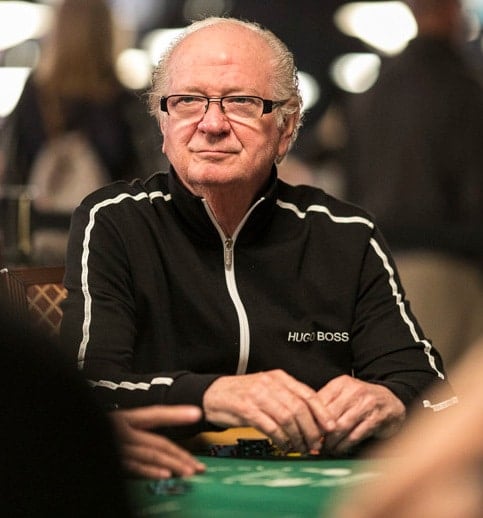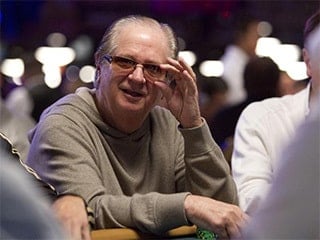Texas Hold’em Poker Games or Lowball
The competitive scene of poker has produced quite a few memorable players over the years. The high stakes attract some of the best players to fight for dominance in exciting battles of skill and strategy. The best of the best receive fame and fortune, becoming known to every serious poker player. Very few players, however, leave a mark in the world of poker beyond their impressive results. These few players leave their contributions which shape the game itself, becoming hallmarks of poker history. Today, we’ll cover one such player: Billy Baxter.
CASH GAMES – WSOP MAIN EVENT – WSOP BRACELET – PLAY ONLINE POKER
Poker Skills
William “Billy” Baxter is an American professional poker player and sports bettor. He’s most known for his tournament career, with over $2 million in earnings and seven World Series of Poker (WSOP) bracelets. He has various other tournament results, including two wins in the World Poker Tour in a $2,500 No Limit Hold ’em and a $2,500 No Limit Hold ’em Seniors events. His most significant contribution to the game, however, actually took place off of the felt in the form of a federal tax refund case from 1986. Baxter won the lawsuit, successfully having all player’s poker winnings classified as “earned income.” This prevented poker earnings from being taxed up to 70 percent as “unearned income,” which greatly helped future poker players looking to make a living from the game. Baxter was also a close friend of poker legend Stu Ungar, staking him for the iconic 1997 WSOP, which he won. He was inducted into the Poker Hall of Fame in 2006 for all his contributions in the poker world.

Early Life Before the Poker Table
William Baxter was born in 1940 in Augusta, Georgia. His first foray into competition was through the game of marbles. At nine years old, he was the undisputed marble champion in Augusta. He made it to a nationwide contest in New Jersey, but due to an unfortunate storm, he had to move from playing on dirt to linoleum, with which he had no experience. Still, Baxter recounted in an interview, “I had every marble in the whole neighborhood. No little boys near my house had any marbles. We used to play all the time, and we played for keeps.”
Baxter’s introduction to formal gambling came when he was a teenager. He was a pool hustler and was making up to $5,000 by age 16. Soon after, he discovered poker in the form of a 2-7 lowball game at the Alpine Lounge, a bar in his hometown. He joined in but quickly busted out and lost his pool-playing winnings. Undeterred, he would return to playing pool to build his bankroll, only to lose it again when he played poker. This cycle continued, but Baxter remained confident throughout all of it. “I knew that I wanted to be at the poker table. These guys had big money and they gambled big. Within a year, I started winning”, he said.

The Paisley Room
Shortly after graduating college, Baxter turned away from his parent’s plan of him becoming a dentist. Making his way to the pool room, he honed his skills as a gambler. Within five years, he heard of a nightclub/gambling space called the Paisley Room. On his first day there, he beat the owner out of $40,000 through gin rummy. The owner then cut him a deal: $40,000 in exchange for half the club. Baxter agreed.
Over the following year, Baxter expanded the illicit casino. While Georgia had some of the strictest anti-gambling laws around, that did little to curb the popularity of games like blackjack, craps, and roulette. The business flourished for a while but was eventually shut down by a new sheriff. Still, Baxter reopened the club in 1973 for the weekend of the golf Masters Tournament. Despite the short time it was open again, the Georgia Bureau of Investigation caught on. They raided the club and booked Baxter for illegal gambling charges.
Baxter left Georgia behind for a while on a honeymoon with his wife, Julie. After returning from their Hawaii honeymoon, they settled in Vegas for nine months. Here, Baxter enjoyed poker – legally, this time – and met many of poker’s big names like Doyle Brunson, Puggy Pearson, and Stu Ungar. Ungar, in particular, surprised Baxter by challenging him to gin rummy. What Baxter assumed would be an easy win turned into a $40,000 loss. “Stuey was not a good gambler, but he was the greatest gin player ever.”
In 1975, the law caught up with Baxter, making him serve a 10-month sentence at Richmond County Correctional Institution. Always a gambler, he wagered with Jack Binion and Doyle Brunson that he could lose 40 pounds while in jail. He won that bet. After being allowed to go to the hospital for the birth of his son, he relocated his family to Vegas to avoid any more legal trouble related to gambling.

Poker Career and the World Series of Poker
Baxter’s career includes seven WSOP bracelets, but what is a bit shocking is all these bracelets were earned in lowball events. He claimed his first in 1975, taking down the $5,000 No Limit Deuce to Seven Draw as his first live tournament cash. After a second-place finish in the 1977 $10,000 No Limit Deuce to Seven Draw, he took down the same event for his second bracelet the following year. He followed this up with a 1981 win in the Ace-to-Five Lowball event of Amarillo Slim’s Super Bowl of Poker. 1982 gave Baxter two more victories in the WSOP $2,500 No Limit Ace to Five Draw and $10,000 No Limit Deuce to Seven Draw events. He earned two more in the 1987 and 1993 $5,000 No Limit Deuce to Seven Draw events. Finally, he picked up his last bracelet in 2002, winning the $1,500 Razz event.
Baxter’s lowball record is astonishing, with his first 27 tournament cashes all being lowball events. In the mid-2000s, Baxter attributed his success to his formidable ability to bluff and read others. “There is not nearly as much bluffing in Hold ’em. But in 2-7, you only have one draw. That lessens the likelihood of a guy improving his hand. So, you have to bluff — and you have to read bluffs”, he said in the interview.

Baxter v. United States
In the 1980s, the original maximum tax rate in the US was 50%. The IRS decided to change this, raising the maximum rate to 70% for “unearned income,” money earned not as a result of work like interest payments. Poker income was also classified as gambling and fell under unearned income, which Baxter vehemently opposed. Professional athletes were exempt from this new tax, but poker wasn’t yet considered a sport. Baxter compared his career to golfer Jack Nicklaus, claiming work at the casino was just as, if not more demanding, than golf. Previously, the IRS had never lost a case like this in court. Baxter’s victory set a precedent and changed the lives of professional poker players forever. Magazines like Sports Illustrated and TIME reported on the case, even labeling Baxter “The Robin Hood of Poker.”
